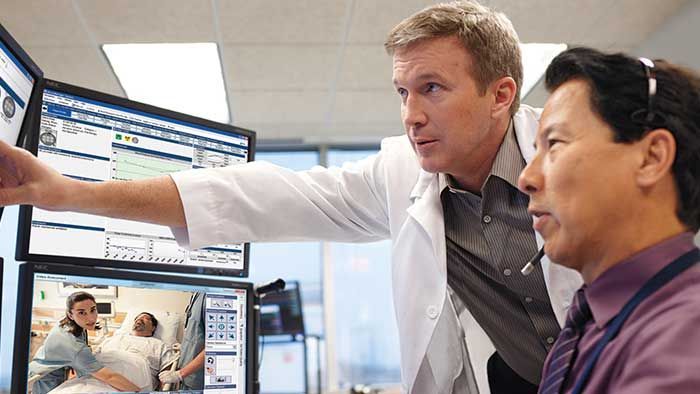Telehealth and the promising implications for patients, staff and healthcare professionals

By: Stephen Hockey
September 17, 2020
COVID-19 pandemic has been an eye-opener for our indispensable reliance on technology and e-health reporting to manage and direct the flow of information between doctors, staff, patients, and policymakers. In our third and final piece on leadership in the current climate, I was glad to be in touch with prominent healthcare experts in Australia to receive interesting insights into how digitisation and IT has become an integral part of the modernisation of the health-care system. Our experts were generous enough to share their experiences with telehealth or health-tech and gave some excellent takeaway messages.
Telehealth is accelerating response and delivery of services
According to Elizabeth Koff, Secretary, NSW Health, the advent of telehealth has been a boon to the industry by making consultations easier through video platforms and to connect patients and staff remotely. Further, Chris McGowan, CEO, SA Health Services seemed elated with the fact that responses that could take weeks historically can now be delivered quickly with the help of digitisation. Telehealth has also reduced paper use and made the deployment of patient reports and services easier according to Toby Hall, Group CEO, St Vincent's Healthcare. It is the technical advancement of a healthcare service that separates good from great and Toby has welcomed telehealth with open arms. Sean Smith, CEO, Mackay Rehab Hospital, Healthecare also stated that contactless consultations and medication ordering made better, safer and faster care possible.
Pandemic has fueled the adoption of IT in healthcare to a great extent
It was quite interesting to hear from Dr Ged Foley, CEO Sonic Clinical Services and Dr Malak Sukkar, CEO, Private Health about how the COVID-19 pandemics catalyzed integration of fast reporting systems into the work culture. It is quite evident that the adoption of fast-paced technology has strengthened the system in terms of coordination, and it will also attract the possibilities of future funding by the stakeholders. Not only practitioners are liking to embrace the technology, but the patients are also equally happy with the transformation. Also, Cris Massis, CEO, Advent Health gave an excellent insight that the demand for flexibility in service provision will increase in future as people look for comfort of obtaining services suitable to their lifestyles.
The fluidity between primary and secondary healthcare will gain momentum
Homecare is very common for chronic patients, and Annette Solman, Chief Executive, Health Education & Training Institute feels that technology is driving flexibility in primary and secondary healthcare. A future where hospitals would act as centres of only emergency services and day surgeries is highly likely. Consumer demands for customised healthcare will increase as education creates awareness about personal care and accountability.
Though telehealth has cemented its place in healthcare with more staff and patients now embracing new technologies, Ben Edwards, CEO Murdoch & GM Mid-West Region, St John of God fears that the inclination of people to work from home may impact the team and organisational culture for a short term.
I am thankful for all the leaders who contributed to this piece and previous pieces In this series, their valuable insights and responses will no doubt prove very useful to our readers. Overall, our leaders feel that telehealth and technology will help advance our healthcare systems dramatically, it will surprise us in ways not yet discovered and I for one am excited at the prospect going forward.

